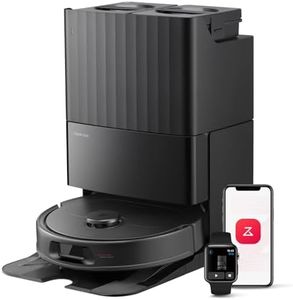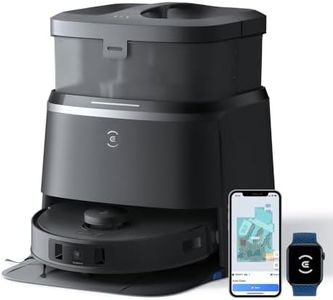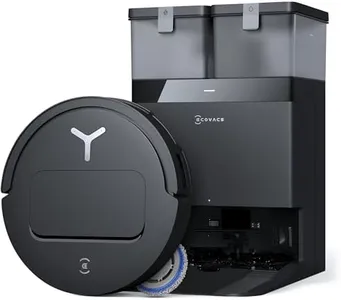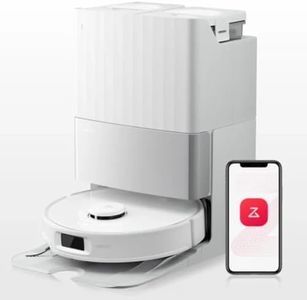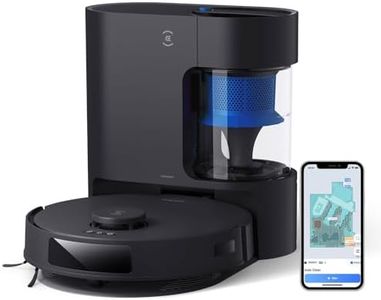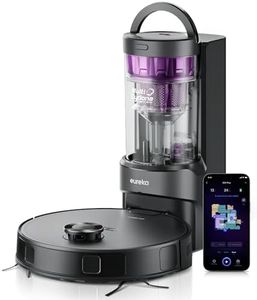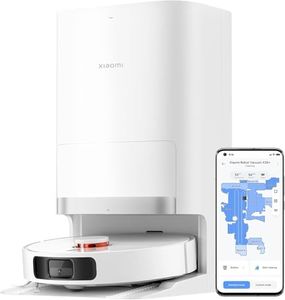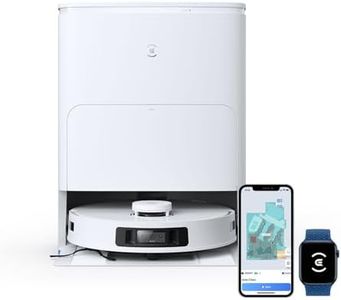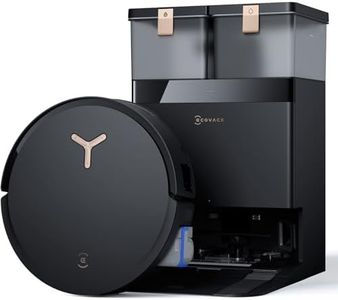We Use CookiesWe use cookies to enhance the security, performance,
functionality and for analytical and promotional activities. By continuing to browse this site you
are agreeing to our privacy policy
10 Best Robot Vacuum For Pets
From leading brands and best sellers available on the web.Buying Guide for the Best Robot Vacuum For Pets
Choosing a robot vacuum for a home with pets is all about finding a model that can handle fur, dander, and the unique messes that come with animals. The best fit will keep floors tidy with minimal intervention from you and help manage allergens, shedding, and even stray kibble. Start by thinking about how many pets you have, the type and amount of shedding, and your home's layout. The following specs will help you compare models and choose one that suits your needs best.Suction PowerSuction power refers to how strongly the vacuum can pull in dirt and debris. For homes with pets, strong suction is important because fur and dander can get stuck in carpets or along baseboards. Generally, suction is measured in pascals (Pa) or as a general power level assigned by the manufacturer. Lower-power models are fine for mostly hard floors or if your pet hardly sheds. Medium power is adequate for regular shedding and low-pile carpets. High suction power is best for long-haired pets, multiple pets, or thick rugs. Consider what kind of flooring you have and how much fur your pets shed when deciding how much power you need.
Brush DesignThe brush design decides how well the vacuum grabs hair and debris from floors. Some models have bristle brushes, others use rubber rollers, and many combine both. Bristle brushes can be good for carpets but may get tangled with long pet hair. Rubber or silicone rollers are easier to clean and better at avoiding tangles, which is ideal for heavy or long-haired shedders. If you have pets that shed a lot or have long hair, look for tangle-free or self-cleaning brushes. For mostly hard floors and minimal shedding, brush type is less critical.
Filtration SystemFiltration is the vacuum’s ability to trap fine particles, such as dander and dust, inside the dustbin rather than releasing them back into the air. HEPA or high-efficiency filters are important for pet owners who have allergies or for reducing airborne irritants. Standard filters are fine for most people, but if you have allergies or want extra air cleanliness, choose models advertised with HEPA or high-performance filters. Check how easy it is to clean or replace the filter, as this impacts maintenance.
Bin CapacityBin capacity is how much dirt and fur the vacuum can hold before you need to empty it. Bigger bins are better for homes with multiple pets or heavy shedders because they fill up less quickly and need less frequent emptying. Smaller bins mean more trips to the trash and may be ok for lighter-shedding pets or small spaces. Think about your pet’s shedding habits and how often you want to empty the vacuum.
Navigation and MappingNavigation technology determines how well the vacuum moves around your home and covers all the floor space. Basic robots move randomly, which works for small, open spaces, but they might miss spots in larger or more complex layouts. Advanced models use sensors or laser mapping to systematically clean and avoid obstacles—even pet toys and bowls. If you have a bigger home or lots of furniture, select a model with mapping for thorough and efficient cleaning. For simpler spaces, navigation style may be less important.
Noise LevelNoise level is how loud the vacuum is during operation. This matters if your pets are anxious about loud sounds or if you prefer a quieter home. Quieter models are less likely to disturb pets, while more powerful units tend to be a bit louder. If your pets are sensitive or you plan to run the vacuum while you’re home, check for models that highlight quiet performance.
Smart Features and ControlsSmart features include app control, voice assistant compatibility, automatic scheduling, and zone cleaning. These features make it easier to schedule cleanings, keep certain areas off-limits (like pet food bowls), and manage cleaning routines. If you want to set cleaning schedules, control the vacuum when away, or easily adjust settings, prioritize models with smartphone or voice control. Less tech-savvy users may be fine with simple button-based controls.
Return to Dock and Self-EmptyingThe ability to return to its charging dock automatically and, in higher-end models, to empty itself into a larger bin is a major convenience. For busy homes or those with a lot of pet hair, a self-emptying model means even less maintenance. If you want the easiest, most hands-off experience, these features are worth considering, but for lighter cleaning loads, manual bin emptying is manageable.
